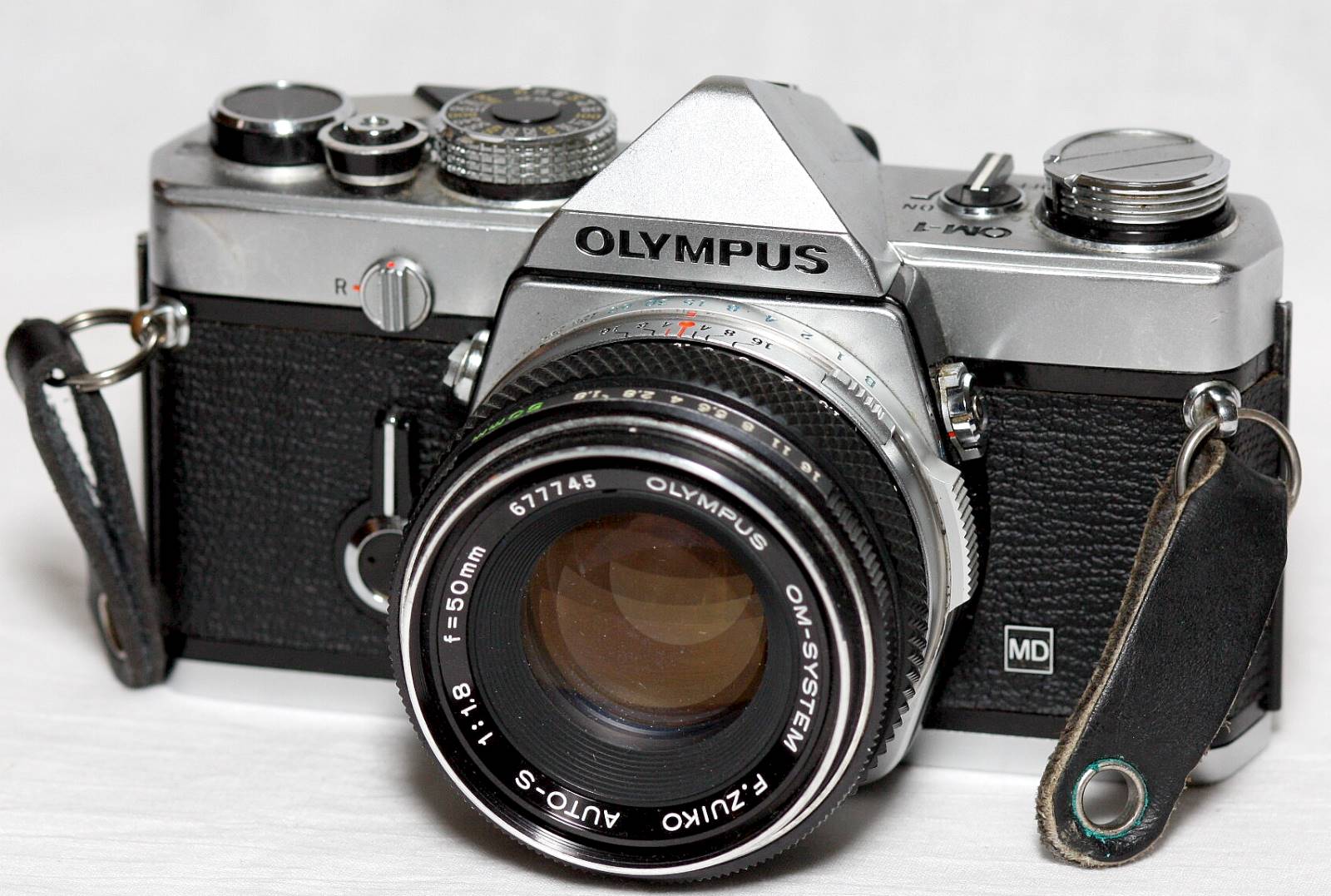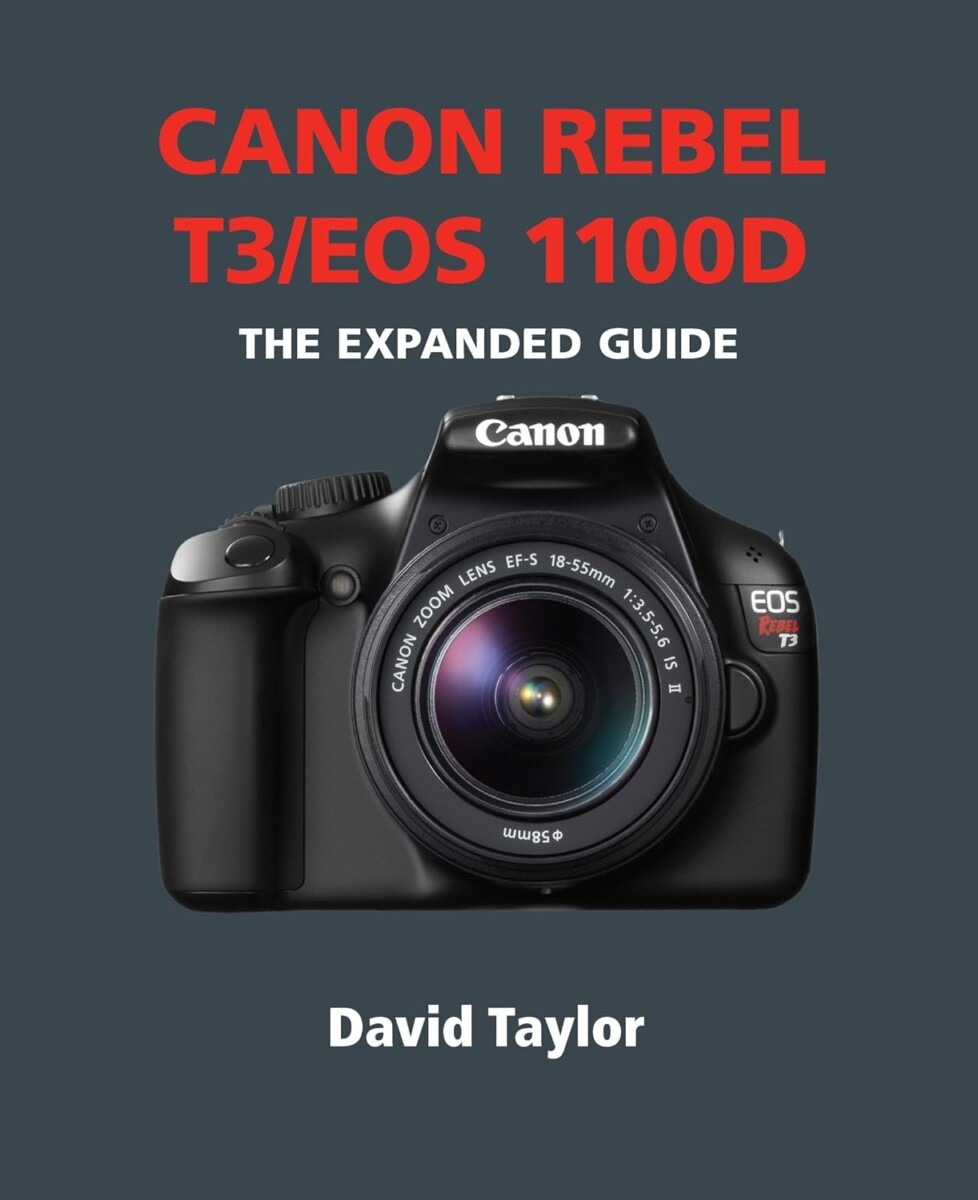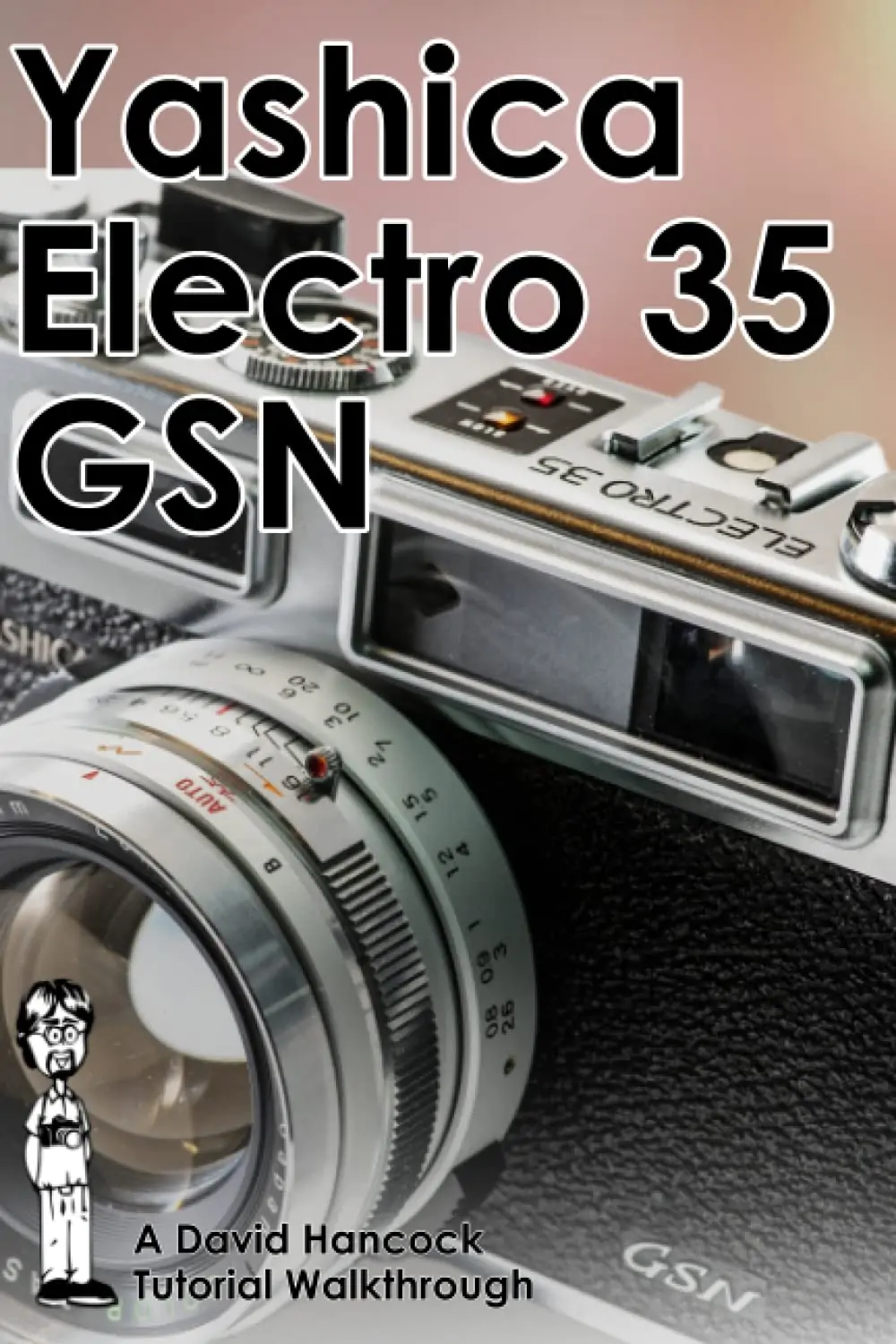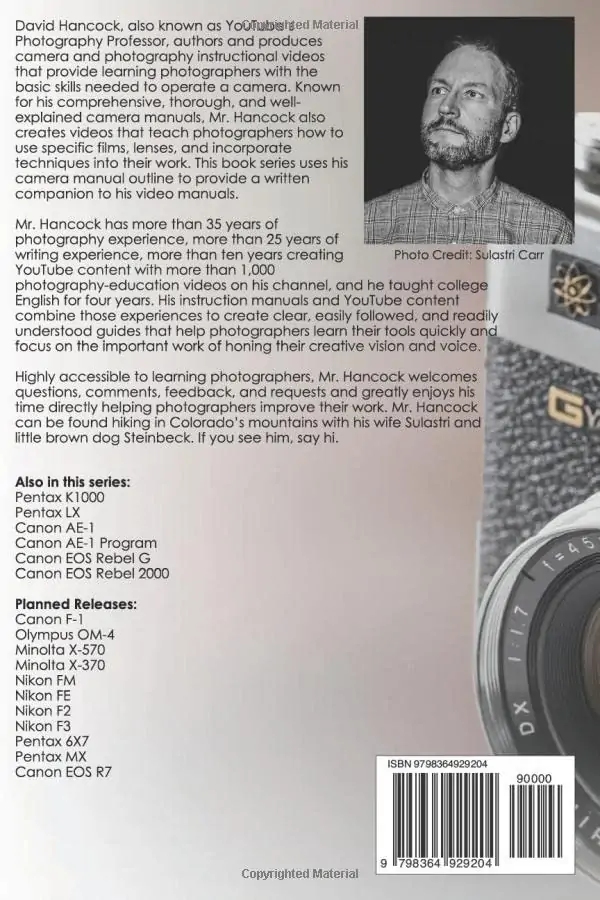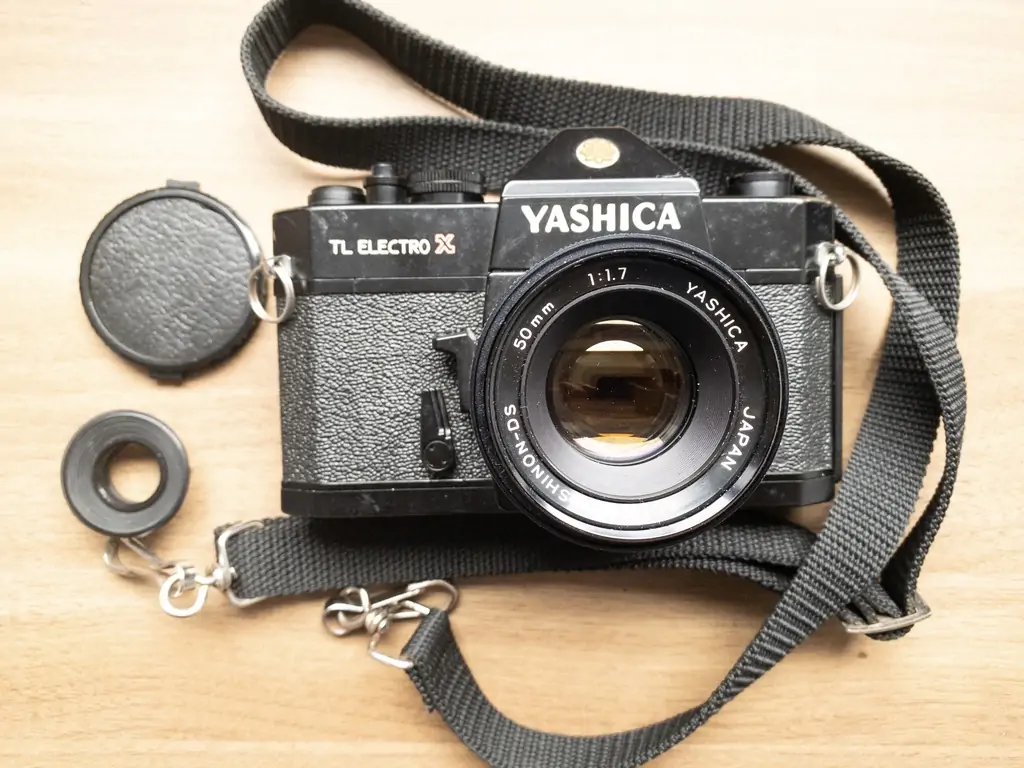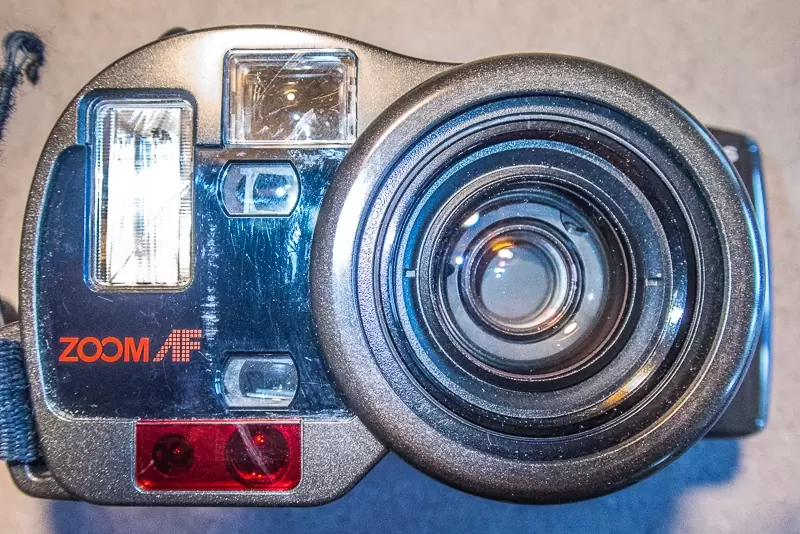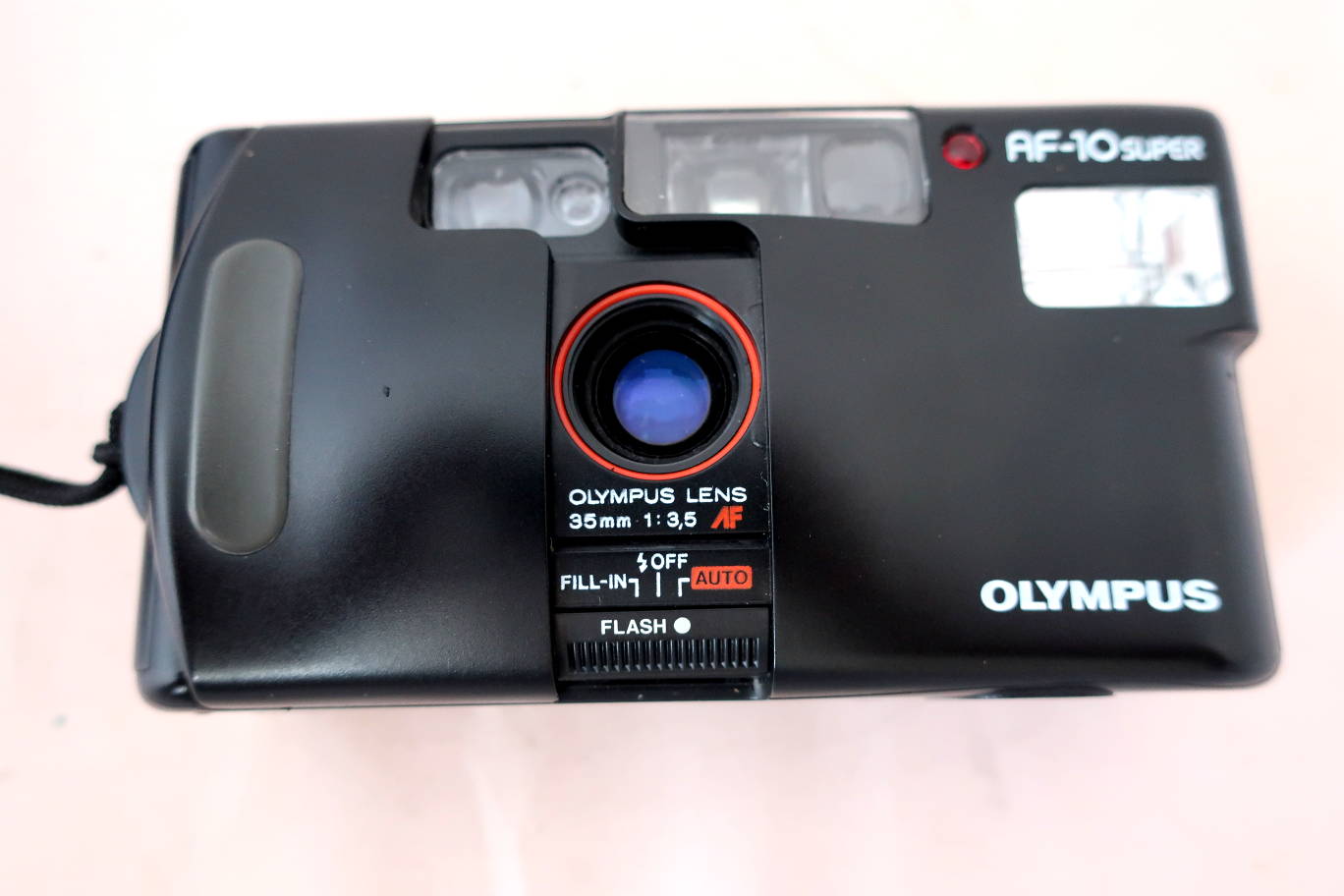On This Page
Olympus OM-1 Overview
The OlympusOlympus introduced its first camera in 1936, the Semi-Olympus I, fitted with the first Zuiko-branded lens. The first innovative camera series from Olympus was the Pen, launched in 1959. The half-frame format, allowing 72 pictures of 18 × 24 mm format on a standard 36-exposure roll of film, made Pen cameras compact and portable for their time. Pixel More OM-1 was introduced in 1972 and came into the shops in 1973. It is a small compact, all manual, film all-mechanical Single Lens ReflexA Single Lens Reflex has a moveable mirror behind the lens, that reflects an image through a five-sided prism (pentaprism) or pair of mirrors, onto a glass screen (the viewfinder). This means the photographer sees exactly the same image that will be exposed. More camera.
It has a very large viewfinder with interchangeable screens but a fixed prism. It also has a through-the-lens exposureThe amount of light that reaches the film (or camera sensor). It determines how light or dark an image is. The exposure of an image is determined by the aperture, shutter speed, and film speed (ISO). During exposure, the sensors or chemicals on the film in analogue models, are subjected to the light outside the camera for a certain time. More meter controlling a needle visible in the viewfinder. It has a very compact body, whose form was retained in later OM film camera models.
The OM-1 is a very usable early SLRA single-lens reflex camera (SLR) is a camera that typically uses a mirror and prism system (hence "reflex" from the mirror's reflection) that permits the photographer to view through the lens and see exactly what will be captured. With twin lens reflex and rangefinder cameras, the viewed image could be significantly different from the final image. When the shutter button is pressed on most SLRs, the mirror flips out of the light path, allowing light to pass through to the film. Other camera typoes include DSLR, Rangefinder and Compact. More. It's all manual systems appeal to many and the built-in (accurate) light meterA device that measures the scene’s luminosity in order to determine the best exposure value. More makes relatively easy to use. There is also a good range of lenses available including a popular 50mm 1.8. The lenses can also be used on modern OlympusOlympus introduced its first camera in 1936, the Semi-Olympus I, fitted with the first Zuiko-branded lens. The first innovative camera series from Olympus was the Pen, launched in 1959. The half-frame format, allowing 72 pictures of 18 × 24 mm format on a standard 36-exposure roll of film, made Pen cameras compact and portable for their time. Pixel More MirrorlessTechnically speaking most DSLR, point-and-shoot and smartphone cameras are mirrorless, in that they don’t have internal mirrors. However, mirrorless camera is a specific term for a camera where the sensor is directly exposed to light and the photographer has a preview of the potential image at all times to view on an electronic viewfinder. For example the Olympus and Panasonic micro four-thirds cameras are mirrorless. More cameras with an adaptor
The camera weighs only 700g with the standard Zuiko 50mm lens and sits well in the hand (W136 x H83 x D86mm ). It was a sensation at its very first debut and remains a sought after camera today among many collectors and film enthusiasts. (See eBay.co.uk listings below) Don't ever let the dimension of the camera misled you to think it is just another ordinary SLRA single-lens reflex camera (SLR) is a camera that typically uses a mirror and prism system (hence "reflex" from the mirror's reflection) that permits the photographer to view through the lens and see exactly what will be captured. With twin lens reflex and rangefinder cameras, the viewed image could be significantly different from the final image. When the shutter button is pressed on most SLRs, the mirror flips out of the light path, allowing light to pass through to the film. Other camera typoes include DSLR, Rangefinder and Compact. More – the OM-1(n) is actually a full-blown system SLRA single-lens reflex camera (SLR) is a camera that typically uses a mirror and prism system (hence "reflex" from the mirror's reflection) that permits the photographer to view through the lens and see exactly what will be captured. With twin lens reflex and rangefinder cameras, the viewed image could be significantly different from the final image. When the shutter button is pressed on most SLRs, the mirror flips out of the light path, allowing light to pass through to the film. Other camera typoes include DSLR, Rangefinder and Compact. More camera. It is not only one of the world's best-performing 35mm SLRA single-lens reflex camera (SLR) is a camera that typically uses a mirror and prism system (hence "reflex" from the mirror's reflection) that permits the photographer to view through the lens and see exactly what will be captured. With twin lens reflex and rangefinder cameras, the viewed image could be significantly different from the final image. When the shutter button is pressed on most SLRs, the mirror flips out of the light path, allowing light to pass through to the film. Other camera typoes include DSLR, Rangefinder and Compact. More cameras, but also at one stage during the early and mid-seventies put OlympusOlympus introduced its first camera in 1936, the Semi-Olympus I, fitted with the first Zuiko-branded lens. The first innovative camera series from Olympus was the Pen, launched in 1959. The half-frame format, allowing 72 pictures of 18 × 24 mm format on a standard 36-exposure roll of film, made Pen cameras compact and portable for their time. Pixel More among the most respectable name with other Japanese 35mm SLRA single-lens reflex camera (SLR) is a camera that typically uses a mirror and prism system (hence "reflex" from the mirror's reflection) that permits the photographer to view through the lens and see exactly what will be captured. With twin lens reflex and rangefinder cameras, the viewed image could be significantly different from the final image. When the shutter button is pressed on most SLRs, the mirror flips out of the light path, allowing light to pass through to the film. Other camera typoes include DSLR, Rangefinder and Compact. More manufacturers.

Variants
Original – OlympusOlympus introduced its first camera in 1936, the Semi-Olympus I, fitted with the first Zuiko-branded lens. The first innovative camera series from Olympus was the Pen, launched in 1959. The half-frame format, allowing 72 pictures of 18 × 24 mm format on a standard 36-exposure roll of film, made Pen cameras compact and portable for their time. Pixel More M-1 (Discontinued after the name was challenged by Leitz . It is believed that about 5,000 M-1s were made and naturally they are very collectable.
OlympusOlympus introduced its first camera in 1936, the Semi-Olympus I, fitted with the first Zuiko-branded lens. The first innovative camera series from Olympus was the Pen, launched in 1959. The half-frame format, allowing 72 pictures of 18 × 24 mm format on a standard 36-exposure roll of film, made Pen cameras compact and portable for their time. Pixel More OM-1MD Addition of a Motor Drive
OlympusOlympus introduced its first camera in 1936, the Semi-Olympus I, fitted with the first Zuiko-branded lens. The first innovative camera series from Olympus was the Pen, launched in 1959. The half-frame format, allowing 72 pictures of 18 × 24 mm format on a standard 36-exposure roll of film, made Pen cameras compact and portable for their time. Pixel More OM-1n Redesigned film advance lever, a flash ready/sufficient flash LED in the viewfinder, and automatic flash synchronization (X-sync)
I now own an OM-1
I now own an OM-1. I found one for sale with some lenses for a great price and although I already have an OM-2 I thought I would splash out. The camera was very dirty, but I was delighted when the meter fired up with the insertion of a new battery and adaptor.
Links
Used and new camera providers – RW Jemmett Photography Business Directory.
Four Types of Camera, Which One Works Best for You?
The Sale Room – Olympus OM-1 Online access to auctions across the country
There are always good examples of the Olympus OM-1 available on Etsy including refurbished models
Wiki – Olympus OM-1
OlympusOlympus introduced its first camera in 1936, the Semi-Olympus I, fitted with the first Zuiko-branded lens. The first innovative camera series from Olympus was the Pen, launched in 1959. The half-frame format, allowing 72 pictures of 18 × 24 mm format on a standard 36-exposure roll of film, made Pen cameras compact and portable for their time. Pixel More OM-1
 OM-1MD with 50 mm f/1.8 lens | |
| Overview | |
|---|---|
| Maker | Olympus |
| Type | SLR |
| Released | 1972 M-1; 1973 OM-1; 1974 OM-1MD; 1979 OM-1n. |
| Production | 1972-1988 |
| Lens | |
| Lens mount | Olympus OM mount |
| Sensor/medium | |
| Recording medium | 135 film |
| Focusing | |
| Focus | Manual focus |
| ExposureThe amount of light that reaches the film (or camera sensor). It determines how light or dark an image is. The exposure of an image is determined by the aperture, shutter speed, and film speed (ISO). During exposure, the sensors or chemicals on the film in analogue models, are subjected to the light outside the camera for a certain time. More/metering | |
| Exposure | Manual |
| Flash | |
| Flash | Hot shoe |
| ShutterEither mechanical and/or electronic shutters are possible. Mechanical systems can use a leaf (or iris) shutter or curtain shutter. In digital cameras a third alternative is also possible: the electronic shutter. This works by activating and then deactivating the CCD so that no further light can be recorded, regardless of whether light is hitting the CCD. The shutter controls the exposure time, which can range from thousandths of a second to several minutes or more. Fast shutter speeds freeze action, slow speeds are more suited to stationary subjects. A tripod is recommended for slow exposure shots to avoid camera shake. More | |
| Frame rate | manually wound |
| Shutter speed range | 1 s – 1/1000 s; BulbBulb mode/setting (B) is a shutter speed option that you can select. It allows your shutter speed to be any length you choose: one second, one minute, 10minutes, etc. It often used to achieve the right exposure for low-light situations like night photography. The Bulb setting usually requires that you hold down the camera’s shutter release button during the entire exposure, or sometimes press it twice. The Bulb name comes from the detachable rubber ‘bulb’ pneumatic shutter releases that were used with early cameras. More |
| General | |
| Dimensions | 136 × 83 × 50 mm |
| Weight | 490 g (17 oz) (OM-1); 510 g (18 oz) (OM-1n) |
| Made in | Japan |
| Chronology | |
| Successor | Olympus OM-2 |
| Footnotes | |
| [1][2] | |
The OlympusOlympus introduced its first camera in 1936, the Semi-Olympus I, fitted with the first Zuiko-branded lens. The first innovative camera series from Olympus was the Pen, launched in 1959. The half-frame format, allowing 72 pictures of 18 × 24 mm format on a standard 36-exposure roll of film, made Pen cameras compact and portable for their time. Pixel More OM-1 is a manually operated 35mm single-lens reflex camera. It is part of the Olympus OM system.
History[edit]
The first model was presented at photokina in Cologne in 1972 and was called the OlympusOlympus introduced its first camera in 1936, the Semi-Olympus I, fitted with the first Zuiko-branded lens. The first innovative camera series from Olympus was the Pen, launched in 1959. The half-frame format, allowing 72 pictures of 18 × 24 mm format on a standard 36-exposure roll of film, made Pen cameras compact and portable for their time. Pixel More M-1. Thirteen years earlier, the release of the Nikon F had made the 35 mm SLRA single-lens reflex camera (SLR) is a camera that typically uses a mirror and prism system (hence "reflex" from the mirror's reflection) that permits the photographer to view through the lens and see exactly what will be captured. With twin lens reflex and rangefinder cameras, the viewed image could be significantly different from the final image. When the shutter button is pressed on most SLRs, the mirror flips out of the light path, allowing light to pass through to the film. Other camera typoes include DSLR, Rangefinder and Compact. More the standard choice for professionals accustomed to Leica and other rangefinders, but it had driven the market towards heavy and bulky cameras. The OlympusOlympus introduced its first camera in 1936, the Semi-Olympus I, fitted with the first Zuiko-branded lens. The first innovative camera series from Olympus was the Pen, launched in 1959. The half-frame format, allowing 72 pictures of 18 × 24 mm format on a standard 36-exposure roll of film, made Pen cameras compact and portable for their time. Pixel More M-1 changed this and with it began a reduction of size, weight and noise of the 35 mm SLRsA single-lens reflex camera (SLR) is a camera that typically uses a mirror and prism system (hence "reflex" from the mirror's reflection) that permits the photographer to view through the lens and see exactly what will be captured. With twin lens reflex and rangefinder cameras, the viewed image could be significantly different from the final image. When the shutter button is pressed on most SLRs, the mirror flips out of the light path, allowing light to pass through to the film. Other camera typoes include DSLR, Rangefinder and Compact. More. It was designed by a team led by Yoshihisa Maitani, who had already created the Pen and Pen F cameras, noted for their compactness.

Since Leica's flagship rangefinderA rangefinder is a focus mechanism that allows the user to calculate the distance of a subject through the convergence of two images. Cameras that use this mechanism are usually referred to as ‘rangefinders’. Rangefinder cameras were very popular in the 1950s, 60s and 70s. Single Lens Reflex (SLRs) and compact cameras largely replaced them in the 70s, 80s and 90s. What is not always appreciated is that rangefinders offer several tangible benefits over SLRs, not least in image quality. Indeed, many photographers would rate the Leica M Digital Rangefinder as one of the best cameras available today. More cameras are known as the M Series, Leica complained about the name of the M-1, forcing OlympusOlympus introduced its first camera in 1936, the Semi-Olympus I, fitted with the first Zuiko-branded lens. The first innovative camera series from Olympus was the Pen, launched in 1959. The half-frame format, allowing 72 pictures of 18 × 24 mm format on a standard 36-exposure roll of film, made Pen cameras compact and portable for their time. Pixel More to rename it as the OM-1 to further clarify between the brands. Because of this, today bodies and lenses with the original M name are rare (52000 bodies were made according to OlympusOlympus introduced its first camera in 1936, the Semi-Olympus I, fitted with the first Zuiko-branded lens. The first innovative camera series from Olympus was the Pen, launched in 1959. The half-frame format, allowing 72 pictures of 18 × 24 mm format on a standard 36-exposure roll of film, made Pen cameras compact and portable for their time. Pixel More) and sought after by collectors.
The OM-1 is an all-mechanical SLRA single-lens reflex camera (SLR) is a camera that typically uses a mirror and prism system (hence "reflex" from the mirror's reflection) that permits the photographer to view through the lens and see exactly what will be captured. With twin lens reflex and rangefinder cameras, the viewed image could be significantly different from the final image. When the shutter button is pressed on most SLRs, the mirror flips out of the light path, allowing light to pass through to the film. Other camera typoes include DSLR, Rangefinder and Compact. More. It has a large viewfinder with interchangeable screens but a fixed prism. It also has a through-the-lens exposure meter controlling a needle visible in the viewfinder. It has a compact body, essentially retained on later models. The shutter speedThe time a camera sensor or film is exposed to light when taking a photo. More dial is located around the lens mount, which allows photographers to keep the camera at the eye between shots more easily than SLRsA single-lens reflex camera (SLR) is a camera that typically uses a mirror and prism system (hence "reflex" from the mirror's reflection) that permits the photographer to view through the lens and see exactly what will be captured. With twin lens reflex and rangefinder cameras, the viewed image could be significantly different from the final image. When the shutter button is pressed on most SLRs, the mirror flips out of the light path, allowing light to pass through to the film. Other camera typoes include DSLR, Rangefinder and Compact. More with the dial located on the top plate.
Originally, the bottom plate needed to be modified to mount a motor drive on the OM-1. In 1974, OlympusOlympus introduced its first camera in 1936, the Semi-Olympus I, fitted with the first Zuiko-branded lens. The first innovative camera series from Olympus was the Pen, launched in 1959. The half-frame format, allowing 72 pictures of 18 × 24 mm format on a standard 36-exposure roll of film, made Pen cameras compact and portable for their time. Pixel More launched the OM-1MD (MD standing for Motor Drive), to which a motor drive can be attached without need for modification. This new version has a small plate marked 'MD' on the front, and a small slot with a circular cover on the underside that covers the motor drive coupling.
In 1979, the next iteration was the OM-1n. It was similar to the OM-1MD, with a redesigned film advance lever, a flash ready/sufficient flash LED in the viewfinder, and automatic flash synchronization (X-sync), regardless of the position of the FP/X switch when used with a T-series flash unit mounted on Flash Shoe 4.
Professional photographers who used the OM-1 include Patrick Lichfield, Jane Bown, David Bailey, Josef Koudelka, Chris Bonington, and Kate Garner.[3]
References[edit]
- ^ "Olympus OM-1". Guide to Classic Cameras. mediajoy. Retrieved 3 March 2012.
- ^ Ting, Ed (23 June 2008). "Olympus OM1 and OM2 Overview". Retrieved 3 March 2012.
- ^ "OMgraphers". Maitani Fan. 2006. Retrieved 20 August 2020.
- Foo, Leo (2000). "Modern Classic SLRs Series: Olympus OM-1(n)". Photography in Malaysia. Retrieved 16 December 2005.
- Axford, Robert Ian. "Olympus OM-1 shutter". Robert Ian Axford's Camera-Works. Retrieved 16 December 2005.
External links[edit]
![]() Media related to Olympus OM-1 at Wikimedia Commons
Media related to Olympus OM-1 at Wikimedia Commons
- Olympus History : OM Series OlympusOlympus introduced its first camera in 1936, the Semi-Olympus I, fitted with the first Zuiko-branded lens. The first innovative camera series from Olympus was the Pen, launched in 1959. The half-frame format, allowing 72 pictures of 18 × 24 mm format on a standard 36-exposure roll of film, made Pen cameras compact and portable for their time. Pixel More Corporation History Page.
- Olympus M-1 User review and further details.
This article was originally based on "Olympus_OM-1/2/3/4" in Camerapedia, retrieved on 26 May 2006 under the GNU Free Documentation License.
Instagram Feed for #olympusom1
Find an Olympus OM-1
Where to buy:

Zine. INTO THE FOREST - A Forest Adventure with Camera and Poodle. 24 Page Zine in A5 - 8.3 x 5.8 inches. Limited Edition. OlympusOlympus introduced its first camera in 1936, the Semi-Olympus I, fitted with the first Zuiko-branded lens. The first innovative camera series from Olympus was the Pen, launched in 1959. The half-frame format, allowing 72 pictures of 18 × 24 mm format on a standard 36-exposure roll of film, made Pen cameras compact and portable for their time. Pixel More Pen
£9.4499999999999993 GBP

